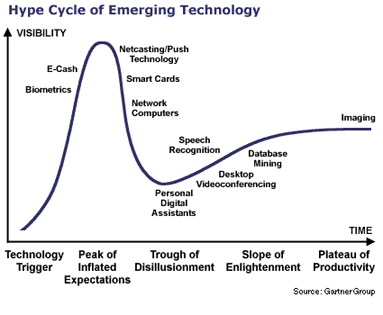‘I have a cunning plan’ – making social media strategic
3 December 2010 By Northern Lights

 Hardly a week goes by in Yorkshire without an event or workshop on social media. It seems that our appetites for anything digital are insatiable.
Hardly a week goes by in Yorkshire without an event or workshop on social media. It seems that our appetites for anything digital are insatiable.
Last week I attended a sell out social media breakfast seminar organised by the Chartered Institute of PR’s Yorkshire and Lincolnshire group.
Deborah Copeland, head of online PR at Brass, had some practical advice and insights for delegates – really focussing on being as strategic online as you would be offline. It was particularly helpful to get pointers on the resources and tools available to help plan strategic campaigns and to hear her take on where we are heading with social media.
1. The trough of disillusionment – or are we heading for a social media backlash?
There is a school of thought that social media could be heading for a decline. According to Gartners ‘Hype Cycle’ model people get very excited about a new technology and think they will be left out if they don’t join in so you get a ‘peak of inflated expectations’. If they try it and don’t find it of any value you get a ‘trough of disillusionment’ and a backlash against that technology can start. Deborah recently attended a conference when this was discussed in some depth and has written a blog on the topic.

2. Know your audience and where they are
Before the team at Brass start working on digital campaigns they ‘map’ the landscape to find out where their target audience is going online.
There’s a plethora of online tools to help you with this ‘mapping’ – to find out who is using what social media and also how to measure the impact of digital campaigns. Deborah’s recommendations include
– ComScore
– Social Media Library
3. How does your target audience behave on line?
Global research company Forrester categorises social media audiences into six categories of participation
- Creators
- Critics
- Collectors
- Joiners
- Spectators
- Inactives
Each category behaves in a different way online and should influence your digital strategy. For example, younger men are more likely to ‘create’ so will happily film something for YouTube or live blog at an event. Mums are less likely to be creators so if they are your target audience don’t ask them to make an online video for a competition.
4. Leave it to the ‘early adopters’
You don’t have to rush in and try out every new social network or application because it’s the flavour of the month. Deborah’s sensible advice is to leave it to the early adopters to test out what is worth using and what isn’t.
5. Don’t respond to every criticism
There are lots of people with time on their hands who use social networks and forums to complain about products and businesses – they are probably not even your customers. Unless there is a really serious complaint or factual error then it is best not to engage in an online ‘cat fight’.
6. Engage with your customers
Instead of worrying about a handful of critics, focus on your loyal customers, engage with them online and listen to their views. Facebook pages can be an excellent platform for engaging with your target audiences (but do your research first!). Ribena, one of Deborah’s clients, has 73,639 Facebook friends – demonstrating huge brand loyalty.
7. Watch what you’re saying
Deborah’s final words were a warning to watch out what you are saying online. From March 2011 the Advertising Standards Authority’s remit is being extended and will cover social networking sites Twitter and Facebook.
With only weeks left until the end of the year – and the decade – what are your predictions for new developments and changes in social media in 2011?
